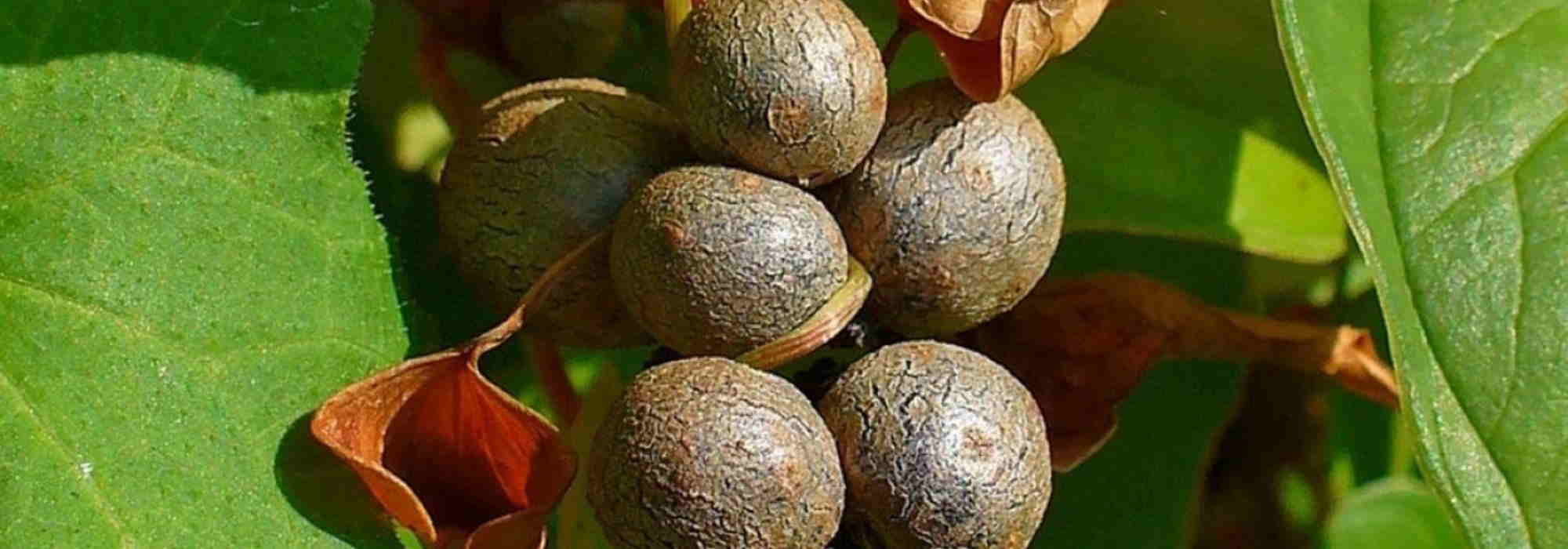
7 exotic vegetables to discover
Cultivation and consumption
Contents
With travel limited due to the health crisis, your vegetable garden remains a way to escape: how about discovering the flavours of vegetable plants from distant lands? Often, their name alone is enough to whisk you far from your soil: chayote, okra, Chinese yam…
Common in vegetable gardens in Asia, Africa or Latin America, these exotic green vegetables are less common in our latitudes. Yet they are no more difficult to grow than traditional carrots, leeks or potatoes, while offering new flavours on our plates.
Discover our small selection of 7 exotic vegetables: for each, we give a few tips for growing and eating them.
Chayote, with a flavour blending courgette and potato
Referring both to plant and fruit, “Christophine” is known by many names: chayote in Réunion, mirliton in Haiti, xuxu in Brazil or chouchoutte in New Caledonia. Native to Mexico, it belongs to family Cucurbitaceae: low in calories while rich in vitamin C, copper and magnesium.
Chayote is planted from March to May for harvest from August to October: it is grown in a pot 15 to 20 cm in diameter, containing a mix of potting soil and garden soil. To grow, it needs light, warmth and regular watering. Once established, this climbing plant produces small yellow and white flowers, before becoming a large green fruit. Note that it can produce fruit for 7 to 8 years.
Shaped like an elongated pear, green-yellow in colour, with rough skin, its firm flesh tastes somewhere between courgette and potato. It is eaten raw or cooked, grated or diced, in gratins or pan-fried. Note that it is also used to make cakes, compote or jam.
→ Also read our full guide on Christophine !
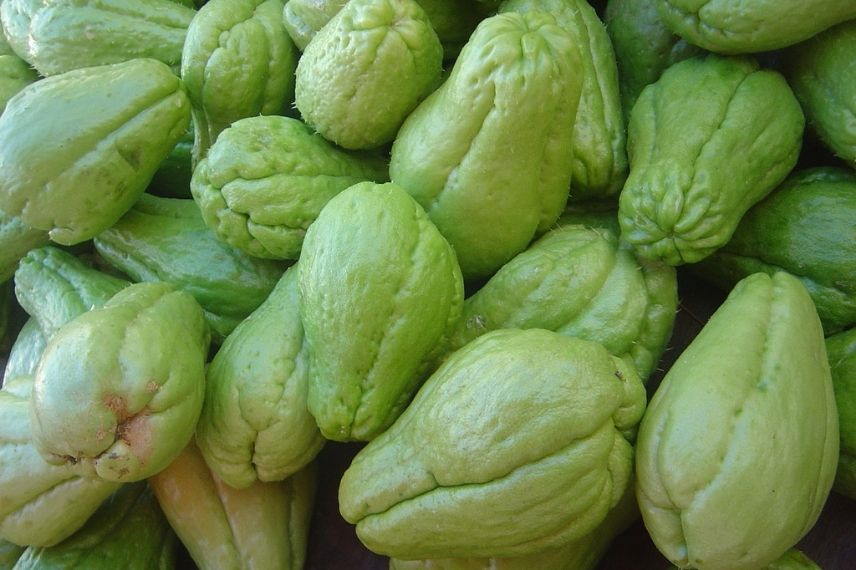
Read also
7 uncommon root vegetablesOkra, taste similar to aubergine
Also called «Okra», «Cabo» or «Calou», okra is a plant native to Africa, belonging to the family Malvaceae. Today, although grown on every continent, its requirement for heat makes it particularly suited to mild climates, in rich, well-drained soils. Otherwise, okra is grown in a heated greenhouse to maintain temperatures above 16 °C.
Sown from February to April, this African vegetable is harvested from August to September. Like green beans, they should be picked as young as possible to encourage the plant to reflower (pale yellow flowers) and form new pods. They will also be more tender that way…
Low in calories, okra fruits, 15 to 18 cm long and 3 cm in diameter, are eaten raw or cooked and offer a flavour close to aubergine. Mucilaginous, it swells on contact with water – making it the perfect ingredient to thicken soups and stews.
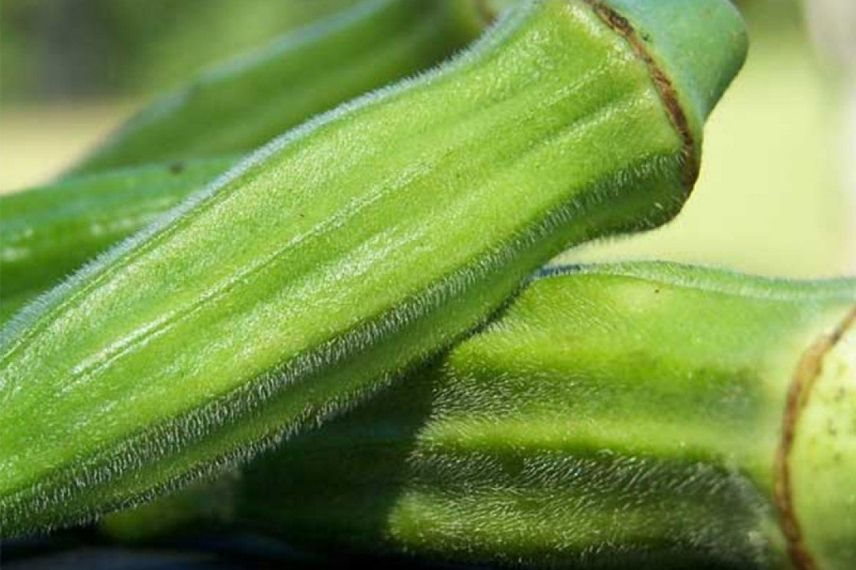
Discover other Vegetables by variety
View all →Available in 1 sizes
Available in 1 sizes
Available in 1 sizes
Available in 1 sizes
Available in 1 sizes
Available in 1 sizes
Available in 1 sizes
Available in 1 sizes
Available in 1 sizes
Available in 1 sizes
Komatsuna Riokai, with a flavour similar to spinach, slightly mustardy
Popular in Japanese and Korean cuisine, Komatsuna Riokai consists of thick stems and dark green leaves, reaching 20 to 30 cm in height at ripeness with a spread of 15 cm.
Sown from March to September in deep soil, with excellent manuring and regular moisture, this exotic vegetable is harvested from July to October by cutting the stem with a knife at the collar. To reduce watering and conserve moisture in the soil, do not hesitate to mulch it with thin layers of grass clippings mixed with dead leaves once young plants are well established.
Low in calories and rich in vitamins C and A, as well as potassium and calcium, Komatsuna Riokai is eaten like spinach. Its taste and texture similarly recall spinach, although flavour is milder and slightly mustardy. Raw in mesclun mixes or cooked — quickly stir-fried in a wok or served in soup — this exotic vegetable is packed with flavour.
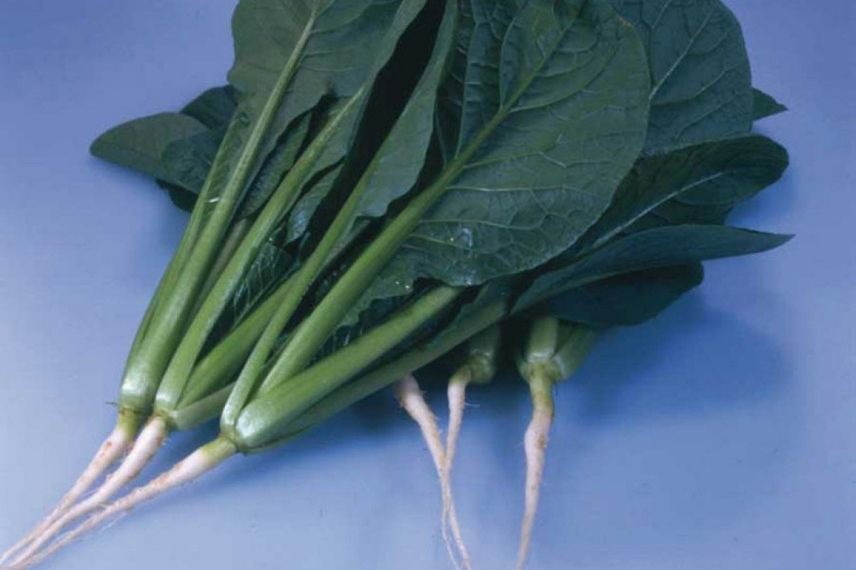
Read also
7 spices to grow in the gardenChinese yam, with a chestnut-like flavour
Essential in traditional Asian cuisine, Chinese yam is a very productive exotic vegetable: from its large tuberised root arise voluble stems bearing heart-shaped flowers. Climbing, its stems can coil up to 3 metres high around a supporting tree or a trellis. Tubercles are covered with a grey-brown skin, with pale yellow, even white, flesh.
Planted from April to May, at 10–12 cm depth and 80 cm between each plant, Chinese yam requires a place both warm and sheltered from wind, as well as loose, rich and deep soil. Requiring generous watering, it is possible to mulch soil to retain required freshness for its cultivation. Harvest takes place when leaves turn yellow in autumn.
Rich in starch, B and C vitamins, and mineral salts, Chinese yam can be eaten raw or cooked: after peeling, the tubercles are cut into pieces, mashed into purée, fried, pan-fried or made into gratins, steamed.
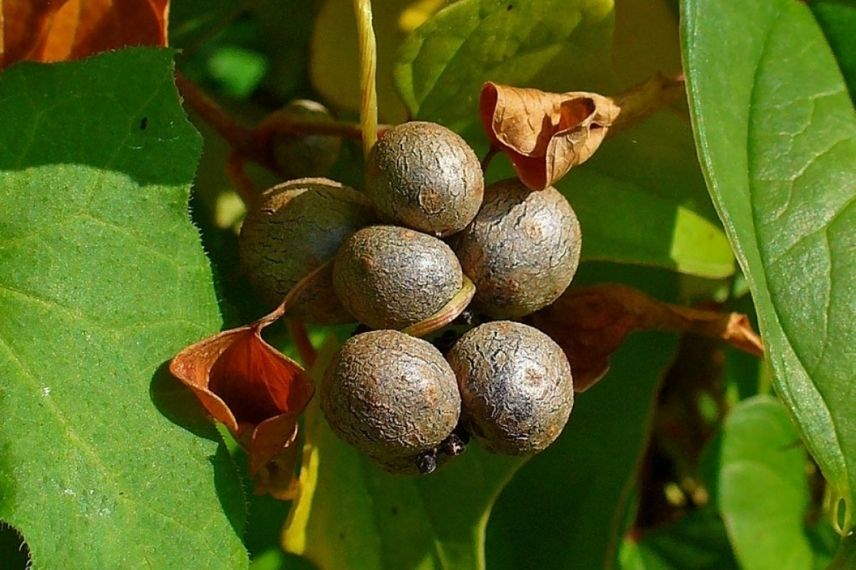
Margose, with a flavour similar to bitter gourd
Originating from South Asia, Chinese bitter melon is known by many names: African cucumber, bitter gourd, goya, kugua, balsam pear, paroka, etc. Fruits measure 6 to 10 cm in length and their skin, very plicate, evokes that of large gherkins.
Traditionally cultivated in warm countries, this climbing plant is sown in full sun from March to May in rich soil, mixing manure or compost with garden soil. Thirsty for water, it requires regular watering and a mulch around its base to retain freshness. This exotic vegetable is harvested from July to October: you should then cut the peduncle a few centimetres from the fruit.
Highly regarded in Asia as a remedy against diabetes, Chinese bitter melon is eaten raw or cooked, after removing skin and pips. But its bitterness is such that it is often blanched and marinated to enjoy a milder yet still invigorating flavour. Consumed regularly, it is thought to promote longevity: residents of Okinawa Island in Japan relish it and hold the world record for longevity…
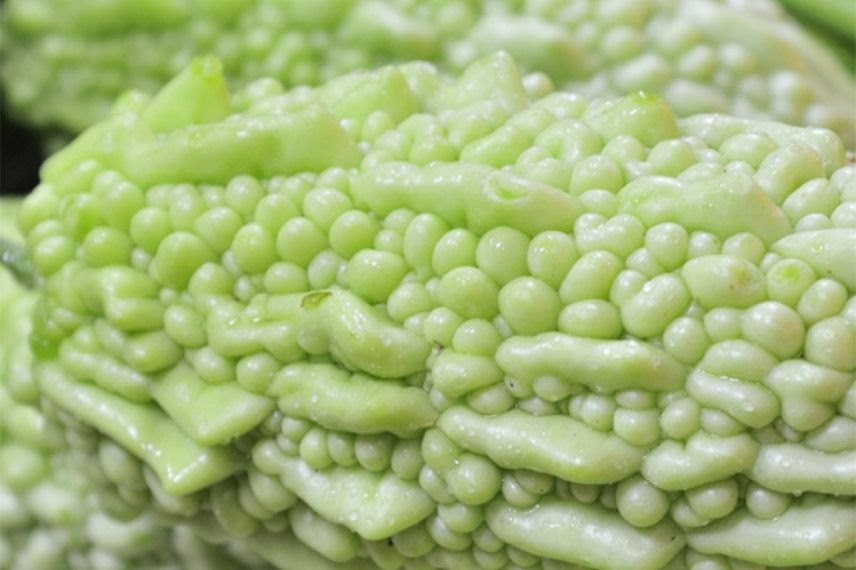
Cyclanthera caigua, with a flavour similar to a slightly crisp cucumber
Native to Mexico, Cyclanthère Caigua is a decorative climbing plant with lush foliage and scented yellow flowering. Belonging to family Cucurbitaceae, it is known under several names: achocha, caihua, korila, cayua…
After sowing carried out between April and June, this exotic green vegetable is harvested 3 to 4 months later, before ripeness: measuring 5 to 15 cm, they are elongated and tapered, with slightly upturned tips and a tender white flesh. During cultivation, provide stakes for each young plant, as it is not uncommon for Cyclanthère Caigua to reach 2 metres in height with a 50 cm spread.
Appreciated for its cucumber-like taste, it is eaten raw in salads or juiced. But it can also be cooked like green beans or stuffed like peppers, or even pickled in vinegar like gherkins.
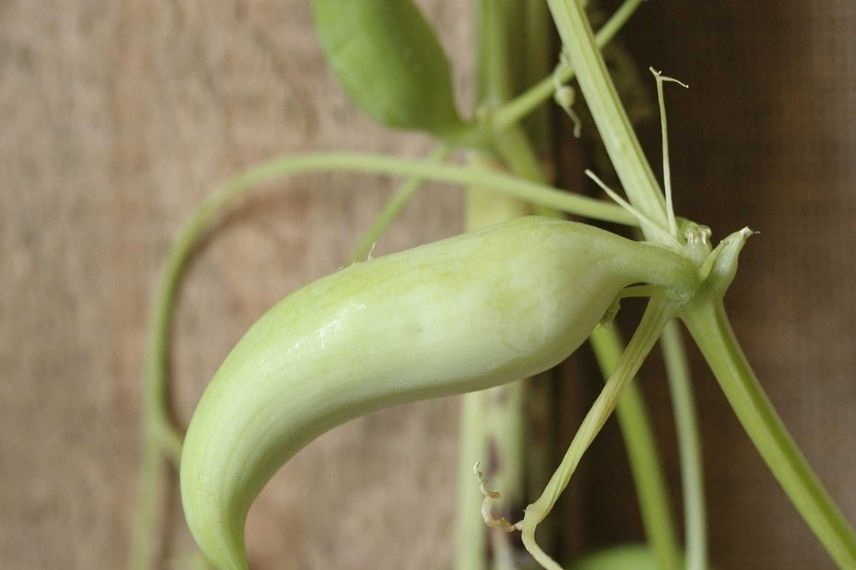
Taro, with a flavour similar to a sweet potato
Native to South Asia, taro is also cultivated in Africa, China and Japan, but also in the Caribbean where it is known as ‘Dachine’, and in Europe under the name ‘colocasia’. However, Polynesian name for taro remains most widespread worldwide.
Ornamental, this plant develops immense leaves, heart-shaped or lance-shaped, of a beautiful green colour, with a yellow cone-shaped inflorescence in summer. Perennial, at ripeness it reaches on average 1.50 m in height and 80 cm in diameter at its base. Sown from February to April in moist, fertile soil, it is harvested when its magnificent leaves have dried, 8 to 9 months later.
Low in calories, rich in fibre, in vitamins C and B, as well as in phosphorus, calcium and iron, its tubercules are eaten like potatoes and its leaves like spinach. Toxic, taro must be cooked: simply peel it, rinse it and cut into sections before cooking in salted water for 20 minutes.

- Subscribe!
- Contents
































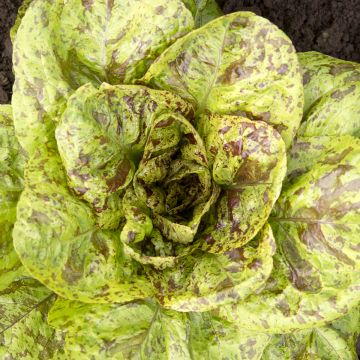
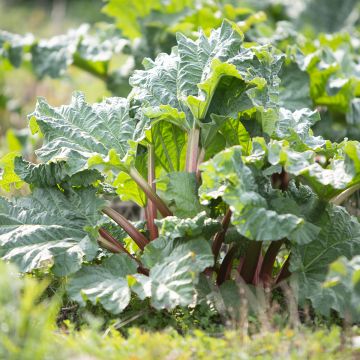
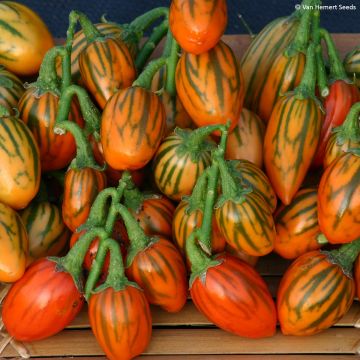
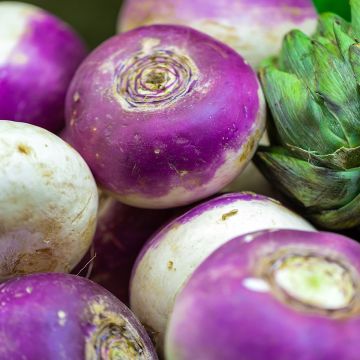

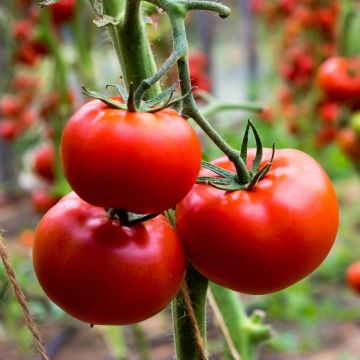
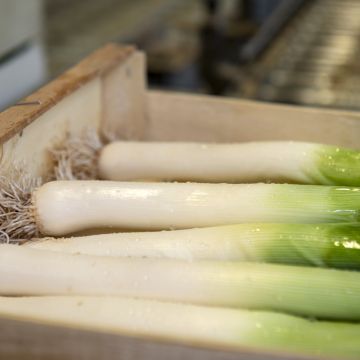
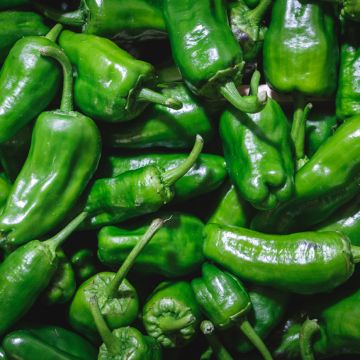
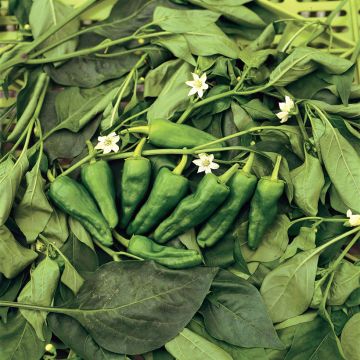
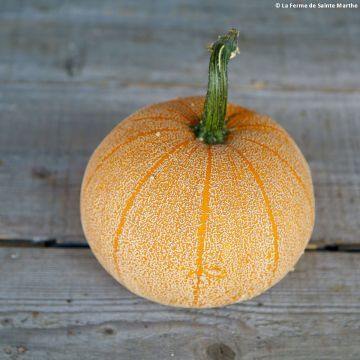
Comments